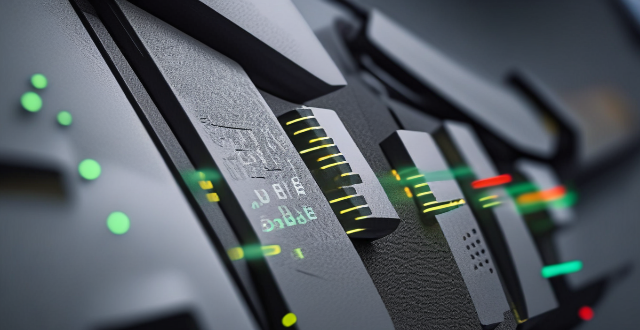This text discusses the differences between wired and wireless network cards, highlighting their characteristics, advantages, and disadvantages. Wired network cards are known for their high speed, reliability, and security but limit mobility and can be challenging to install in large spaces. In contrast, wireless network cards provide flexibility and ease of installation but may suffer from slower speeds, interference, and potential security vulnerabilities. The choice between these types often depends on specific needs such as performance requirements, security concerns, and budget.

Differences between Wired and Wireless Network Cards
Network cards, also known as network interface cards (NICs), are hardware components that enable devices to connect to a computer network. They come in two main types: wired and wireless. Each type has its own set of characteristics and uses.
Wired Network Cards
Wired network cards use cables to connect devices to the network. The most common type of wired network card is an Ethernet card, which typically uses an RJ-45 connector and Ethernet cables. Here are some key points about wired network cards:
- Speed and Reliability: Wired connections generally offer faster speeds and more reliable connections compared to wireless. This makes them ideal for applications where high bandwidth and low latency are required, such as gaming or large data transfers.
- Security: Wired networks are usually more secure than wireless networks because it's harder to intercept data transmitted over a physical cable.
- Installation and Configuration: Installing a wired network card is straightforward, but running cables throughout a building can be complex and disruptive.
- Mobility: Since wired connections require a physical connection to the network, they limit the mobility of devices.
Pros of Wired Network Cards
- High speed and low latency
- Greater reliability and stability
- Generally more secure
Cons of Wired Network Cards
- Limited mobility
- Can be aesthetically displeasing due to numerous cables
- More difficult to scale in large environments
Wireless Network Cards
Wireless network cards allow devices to connect to a network without the need for physical cables. These cards typically use radio waves to transmit data between devices and a wireless router or access point. Key aspects of wireless network cards include:
- Flexibility and Mobility: Wireless network cards offer greater flexibility and mobility as devices can connect to the network from anywhere within range of the wireless signal.
- Installation: Installing a wireless network card is often easier than installing a wired card since there's no need to run cables.
- Speed and Reliability: While wireless technology has improved significantly over the years, it still tends to be slower and less reliable than wired connections, particularly in areas with a lot of interference or physical barriers.
- Security: Wireless networks can be more vulnerable to unauthorized access if not properly secured with strong encryption and authentication protocols.
Pros of Wireless Network Cards
- Increased mobility and flexibility
- Easier installation and expansion
- Less intrusive in terms of physical space
Cons of Wireless Network Cards
- Potential for slower speeds and higher latency
- Greater susceptibility to interference
- Security concerns if not properly configured
Conclusion
Both wired and wireless network cards serve important roles depending on the specific needs and circumstances of the user or organization. Wired connections are typically faster, more reliable, and more secure, making them suitable for applications requiring high performance and security. On the other hand, wireless connections offer convenience and mobility at the cost of potential reduced speed and increased vulnerability to interference and security threats. The choice between wired and wireless networking often depends on factors such as the environment, required bandwidth, security needs, and budget.